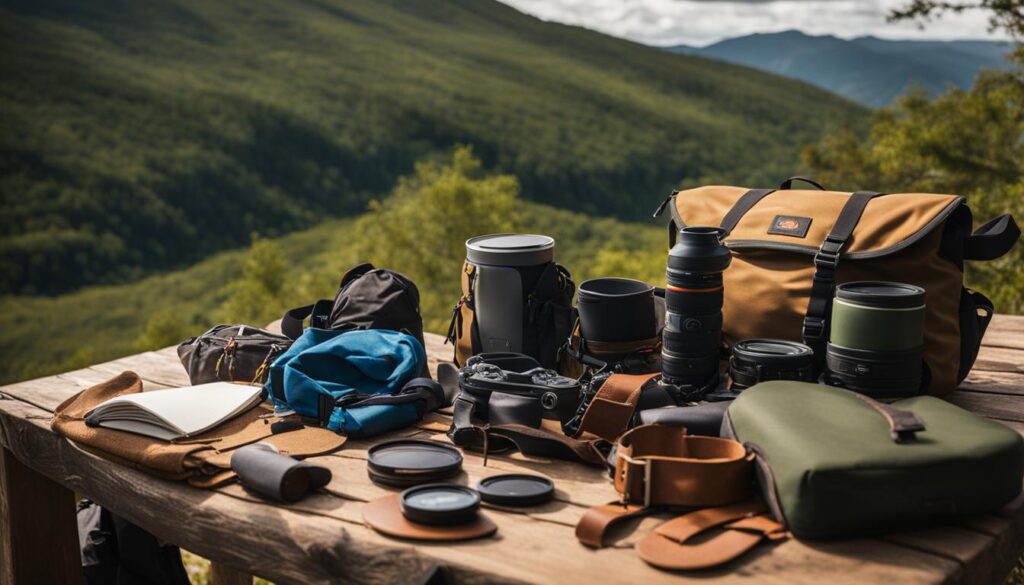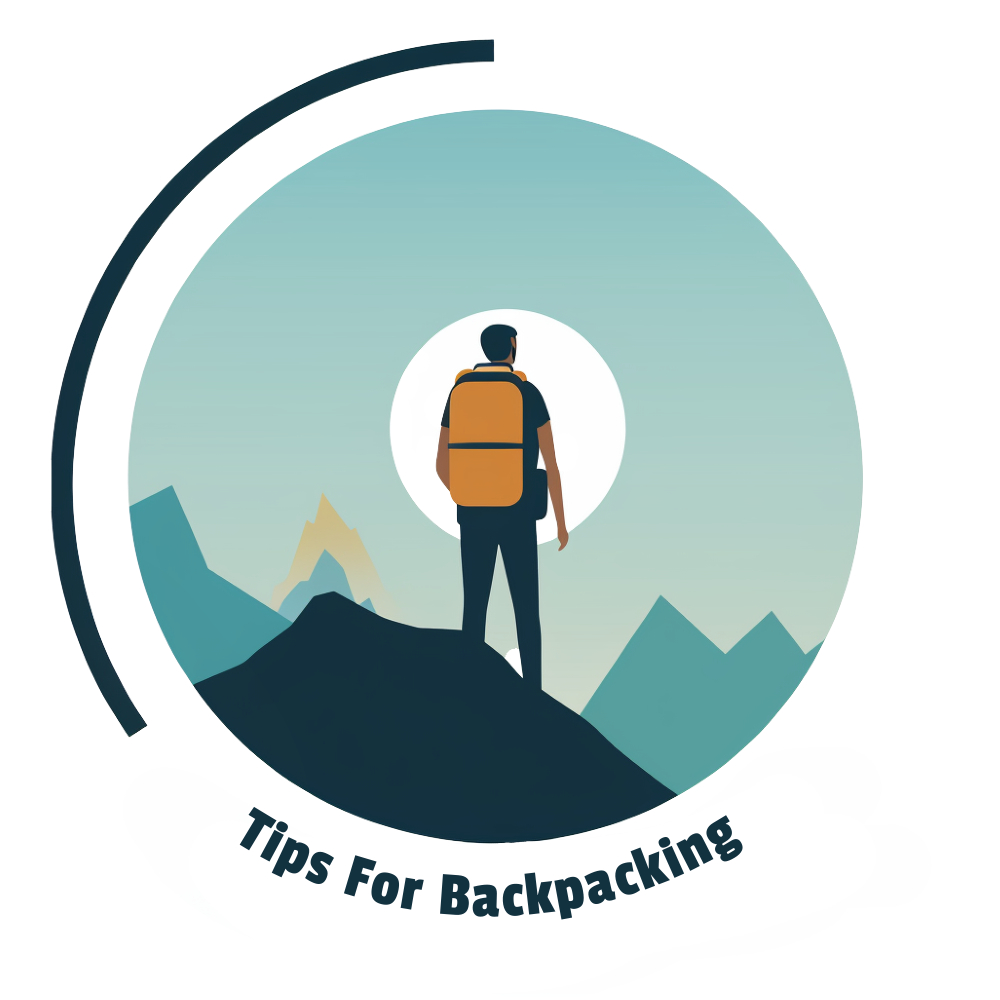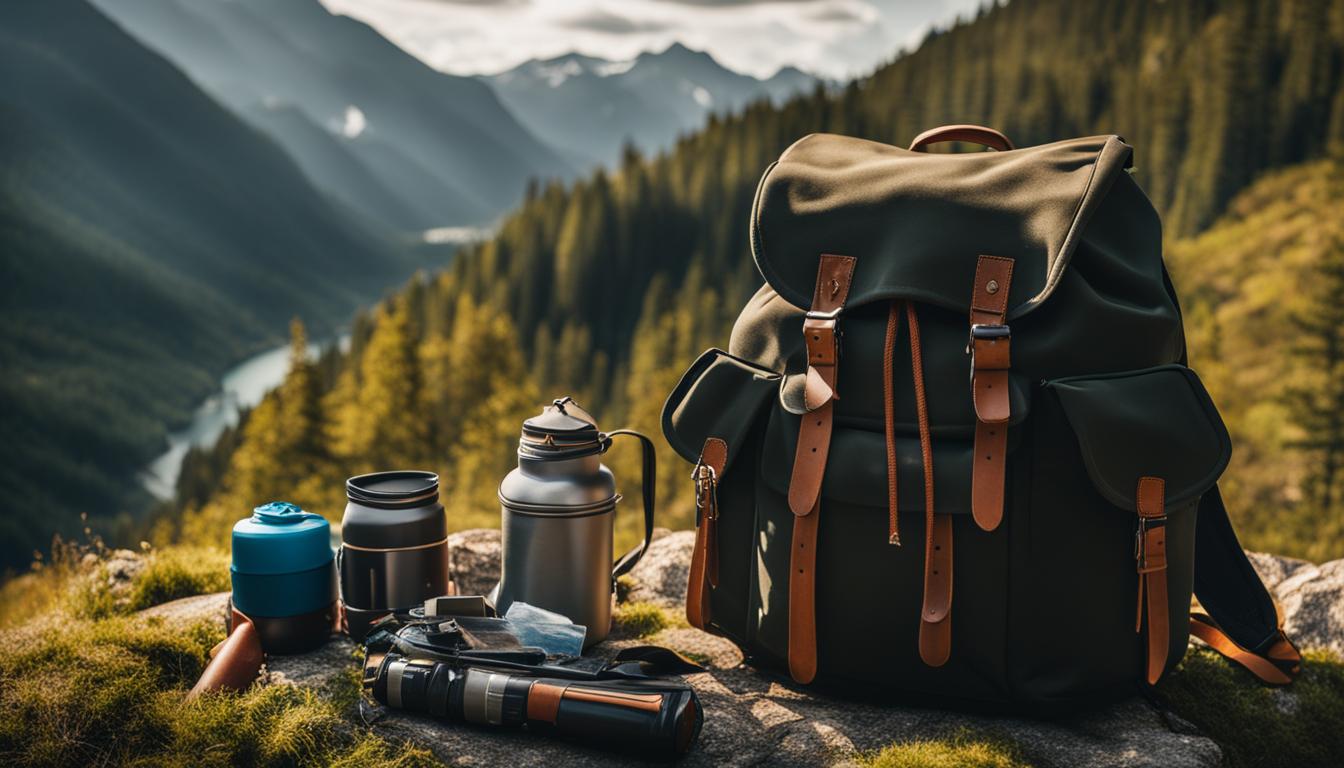Backpacking can be an expensive endeavor, but with the right strategies, you can enjoy this adventurous activity on a budget. By following these budget-friendly backpacking tips, you’ll be able to plan your trip and save money on essential gear, accommodations, transportation, and food. Whether you’re a beginner or an experienced backpacker, these affordable backpacking ideas will help you make your travel dreams a reality without breaking the bank.
Key Takeaways:
- Plan your trip and budget wisely to save money on essential expenses.
- Consider buying used gear or renting equipment to save on backpacking gear costs.
- Choose budget-friendly accommodations such as hostels, campsites, or homestays.
- Opt for cost-effective transportation options like public transportation or ridesharing.
- Explore affordable outdoor adventure activities in your destination to minimize expenses.
Budget-friendly Backpacking Tips

When it comes to backpacking, saving money on gear is essential. Here are some budget-friendly tips to help you find inexpensive backpacking essentials without compromising on quality.
Buy Used Gear
One way to save money on backpacking gear is by purchasing used items. Many reputable retailers sell returned gear at discounted prices. You can also check out garage sales or online marketplaces where outdoor enthusiasts sell their gear. Just make sure to inspect the items carefully before purchasing to ensure they are in good condition.
Borrow or Rent Gear
If you have friends who are experienced backpackers, consider borrowing gear from them. This can save you a significant amount of money, especially if you’re just starting out. Alternatively, you can rent gear from gear rental sites or outdoor stores. This way, you’ll have access to high-quality equipment without the hefty price tag.
Look for Budget-Friendly Options
When purchasing new gear, look for budget-friendly options that offer good quality and durability. There are many affordable brands that provide high-performance gear at a fraction of the cost of premium brands. Do your research, read reviews, and choose gear that meets your needs and budget.
By following these budget-friendly backpacking tips, you can save money on gear and still have all the essentials you need for your outdoor adventure. Remember to prioritize quality and durability, and don’t hesitate to explore used or rental options for even more savings.
| Essential Gear | Price Range |
|---|---|
| Sleeping Bag | $50 – $150 |
| Tent | $100 – $300 |
| Hiking Boots | $50 – $150 |
| Backpack | $50 – $200 |
| Cooking Stove | $20 – $50 |
Note: Prices are approximate and may vary based on brand, features, and quality.
Budget-friendly Accommodation and Transportation
When it comes to backpacking, finding budget-friendly accommodation and transportation options is essential to keeping your trip affordable. By following these money-saving backpacking advice and employing low-cost backpacking strategies, you can ensure that your adventure doesn’t break the bank.
Accommodation
One of the best ways to save money on accommodation while backpacking is to opt for budget-friendly options such as hostels, guesthouses, or campsites. These options often offer affordable rates and provide you with the opportunity to meet other travelers. Consider booking in advance to secure the best deals and availability.
If you’re open to more adventurous options, you can also look into homestays or work exchange programs. Homestays allow you to stay with a local family, providing a unique cultural experience while saving on accommodation costs. Work exchange programs, on the other hand, allow you to work a few hours a day in exchange for free or discounted accommodation. Websites like Workaway and HelpX are great resources for finding these opportunities.
Transportation
When it comes to transportation, there are several cheap outdoor adventure tips to help you get around without breaking the bank. One of the most cost-effective options is to use public transportation. Research the local bus or train system in your destination, as they often offer affordable fares and can take you to popular tourist spots.
Ridesharing services like Uber or Lyft can also be a great way to save money on transportation, especially if you’re traveling with a group. Splitting the cost of a ride can make it much more affordable than taking a taxi or renting a car.
For the more adventurous travelers, hitchhiking can be a budget-friendly option. This allows you to catch a ride with locals or fellow travelers heading in the same direction. However, it’s important to prioritize your safety and exercise caution when hitchhiking.
| Accommodation Tips | Transportation Tips |
|---|---|
| Stay in budget-friendly options like hostels, guesthouses, or campsites. | Utilize public transportation systems to save on fares. |
| Consider homestays or work exchange programs for a unique, cost-effective experience. | Take advantage of ridesharing services for affordable transportation. |
| Book accommodation in advance to secure the best deals and availability. | Explore hitchhiking as a budget-friendly option, prioritizing safety. |
By implementing these cost-effective backpacking planning strategies for accommodation and transportation, you’ll be able to make the most of your travel budget without compromising your experience. Remember, it’s all about finding the right balance between affordability and adventure.
What Budget-Friendly Gear Do I Need to Prepare for Backpacking as a Beginner?
When gathering gear for beginner backpacking, opt for budget-friendly options to start. Essential items include a sturdy backpack, lightweight tent, sleeping bag, portable stove, and water purification system. Research “tips for beginner backpacking” to ensure you’re prepared for the journey ahead.
What Budget-Friendly Tips Can I Use to Prepare for a Multi-Day Backpacking Journey?
When preparing for multiday backpacking, choosing lightweight and compact gear is key. Opt for simple, versatile items like a multipurpose tool, dehydrated meals, and a reliable water filtration system. Additionally, plan your route carefully to minimize extra mileage. Lastly, consider sharing gear and packing essentials with your hiking buddies to save money.
Conclusion
So there you have it, my fellow adventure enthusiasts – a comprehensive guide on how to start backpacking on a budget! By implementing these budget-friendly backpacking tips and strategies, you can embark on an incredible journey without draining your bank account.
Remember, the key to successful budget backpacking lies in careful planning. Start by setting a realistic budget and researching cost-effective destinations. Consider investing in inexpensive backpacking essentials and explore options for affordable gear, such as buying used or renting equipment.
When it comes to accommodation and transportation, think outside the box. Look for budget-friendly hostels, campsites, or even try your luck with homestays or work exchange programs. Opt for cost-effective transportation options like public transportation or hitchhiking and plan your itinerary wisely to minimize travel expenses.
Backpacking on a shoestring budget doesn’t mean compromising on adventure. With the right strategies and a little creativity, you can have an incredible outdoor experience without breaking the bank. So pack your bags, lace up your hiking boots, and get ready to embark on an unforgettable budget-friendly backpacking adventure!

